It is no place for a treasure chamber. Anyone who enters the "room of insects" in the basement of the natural history Museum in Berne, is for the time being, disappointed. Neon lighting, movable shelves, grey walls. It is cool and dry in this barren archive. First, as to the entomologist, Hannes Baur a wooden box with a glass window, pulling out the shelf, get the treasures to the fore. Butterflies, neatly lined up with fine needles is fixed. In another case of wasps, small dots present Parasite, barely visible. Each showcase is a small work of art. "About 2.5 million objects in this collection", says Hannes Baur.
Switzerland is rich in such archives. Not only in the major centres Zurich, Basel, Bern and Geneva. Also, St. Gallen, Ticino, Uri and Lucerne have remarkable collections. Animals, plants, fungi, stones, bones, soil samples and fossils: in Switzerland there are over 60 million objects, the hidden, mostly in the storerooms of natural history museums, Botanical gardens and universities. The findings of the report "the National importance of scientific collections of Switzerland", the Academy of natural Sciences (SCNAT) yesterday at the natural history Museum in Bern has presented.
National job
"The Switzerland international is a big Player," says Christoph Scheidegger, co-author and President of the platform "biology" of the Academy of natural Sciences. This applies, however, only the importance of the collections. The access to this scientific Estimate is, however, largely for research closed. Only 17 percent of the objects are documented digitally, the Rest can only be with great effort for the science.
to change the Academy of natural Sciences. "It is a national task, to digitize the entire collections," says Scheidegger. This means: For each object, at least the location of the find, the date and a description should be recorded. This is a document of every single collection piece. The data should finally be on a national digital research platform networked to be accessible to the public. "The huge potential of the collections lies in the networking, it gives the research a huge collection," says Christoph Beer, Director of the natural history Museum of Bern and President of the Association of natural museums.
For many nature museums in Switzerland, however, this is uncharted territory. They apply in the Public and in the policy primarily as a knowledge intermediary. You have previously meet in the first place a Cultural mission, says Beer. In addition, museums of the year, suffer for a year under the pressure of donors, the cantons and the municipalities. The digitization of the collections and the research claim are brought under these conditions into the Background.
pictures: Valuable objects in museums and universities
but This is only due to the large museums such as the natural history in Bern, which has a private team of researchers and is well positioned. The United herbaria of the University of Zurich and the ETH Zurich annually a Budget of about 800'000 Swiss francs to the plant, fungus and moss collections not only to store but to digitize and improve the infrastructure. Smaller museums, such as in St. Gallen, however, have, according to Director Toni Bürgin about a place that is dedicated to the collection of "nature-cared for historical collections and developed, their Benefits, more and more, and will eventually become obsolete," says Reto Nyffeler from the Institute of Systematic and Evolutionary botany and curator of the herbarium of the University of Zurich.
to prevent the Academy of natural Sciences. She is concerned that without future Effort of the international research is missed. The EU, for example, the importance of museums has recognized and collections as a priority research infrastructure.
professionals
the Academy and the natural history museums are now active, the lack of which has to do according to the initiators, with the advancement in science. Today, objects can also be used in ancient collecting genetic material or chemical compositions. This opens up new research approaches. Thus, climatic and ecological environment can be shown to demonstrate changes over decades or centuries on the basis of the Collection. The data from the past are now valuable to the present and the future. For example, could be demonstrated by using the collection of soil samples of the research Institute WSL in Birmensdorf, the degree of radioactive contamination of soils in Switzerland after the nuclear accident in Chernobyl.
In the next two years, the Academy intends to develop, together with the museums and universities, the strategy for the future digital research platform. By 2024, the national infrastructure is to be constructed. The Academy expects costs of around 14 million francs, which it has requested from the Federal government.
the initiators of The project hope to achieve another effect of the digitisation of the collections. For the determination of insects, plants and fungi, more and more professionals are lacking. Among other things, because the collection-based research in contrast to molecular Sciences, far less is regarded. "With the digitisation of attractive new research projects open up," says Christoph Scheidegger of the Swiss Academy of Sciences.
(editing Tamedia)
Created: 17.01.2019, 21:44 Uhr

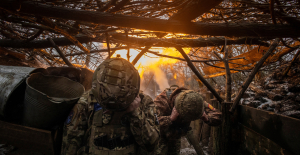 What is chloropicrin, the chemical agent that Washington accuses Moscow of using in Ukraine?
What is chloropicrin, the chemical agent that Washington accuses Moscow of using in Ukraine? Poland, big winner of European enlargement
Poland, big winner of European enlargement In Israel, step-by-step negotiations for a ceasefire in the Gaza Strip
In Israel, step-by-step negotiations for a ceasefire in the Gaza Strip BBVA ADRs fall almost 2% on Wall Street
BBVA ADRs fall almost 2% on Wall Street Children born thanks to PMA do not have more cancers than others
Children born thanks to PMA do not have more cancers than others Breast cancer: less than one in two French women follow screening recommendations
Breast cancer: less than one in two French women follow screening recommendations “Dazzling” symptoms, 5,000 deaths per year, non-existent vaccine... What is Lassa fever, a case of which has been identified in Île-de-France?
“Dazzling” symptoms, 5,000 deaths per year, non-existent vaccine... What is Lassa fever, a case of which has been identified in Île-de-France? Sánchez cancels his agenda and considers resigning: "I need to stop and reflect"
Sánchez cancels his agenda and considers resigning: "I need to stop and reflect" “Amazon product tester”: the gendarmerie warns of this new kind of scam
“Amazon product tester”: the gendarmerie warns of this new kind of scam “Unjustified allegations”, “promotion of illicit products”… Half of the influencers controlled in 2023 caught by fraud repression
“Unjustified allegations”, “promotion of illicit products”… Half of the influencers controlled in 2023 caught by fraud repression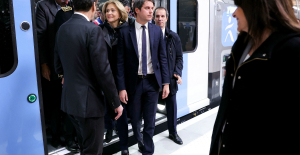 Extension of the RER E: Gabriel Attal welcomes a “popular” ecology project
Extension of the RER E: Gabriel Attal welcomes a “popular” ecology project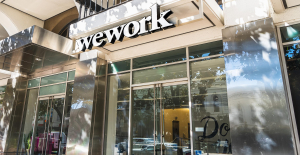 WeWork will close 8 of its 20 shared offices in France
WeWork will close 8 of its 20 shared offices in France “We were robbed of this dignity”: Paul Auster’s wife denounces the betrayal of a family friend
“We were robbed of this dignity”: Paul Auster’s wife denounces the betrayal of a family friend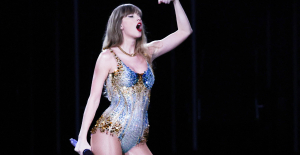 A masterclass for parents to fill in their gaps before Taylor Swift concerts
A masterclass for parents to fill in their gaps before Taylor Swift concerts Jean Reno publishes his first novel Emma on May 16
Jean Reno publishes his first novel Emma on May 16 Cannes Film Festival: Meryl Streep awarded an honorary Palme d’Or
Cannes Film Festival: Meryl Streep awarded an honorary Palme d’Or Omoda 7, another Chinese car that could be manufactured in Spain
Omoda 7, another Chinese car that could be manufactured in Spain BYD chooses CA Auto Bank as financial partner in Spain
BYD chooses CA Auto Bank as financial partner in Spain Tesla and Baidu sign key agreement to boost development of autonomous driving
Tesla and Baidu sign key agreement to boost development of autonomous driving Skoda Kodiaq 2024: a 'beast' plug-in hybrid SUV
Skoda Kodiaq 2024: a 'beast' plug-in hybrid SUV The home mortgage firm rises 3.8% in February and the average interest moderates to 3.33%
The home mortgage firm rises 3.8% in February and the average interest moderates to 3.33% This is how housing prices have changed in Spain in the last decade
This is how housing prices have changed in Spain in the last decade The home mortgage firm drops 10% in January and interest soars to 3.46%
The home mortgage firm drops 10% in January and interest soars to 3.46% The jewel of the Rocío de Nagüeles urbanization: a dream villa in Marbella
The jewel of the Rocío de Nagüeles urbanization: a dream villa in Marbella Europeans: a senior official on the National Rally list
Europeans: a senior official on the National Rally list Blockade of Sciences Po: the right denounces a “drift”, the government charges the rebels
Blockade of Sciences Po: the right denounces a “drift”, the government charges the rebels Even on a mission for NATO, the Charles-de-Gaulle remains under French control, Lecornu responds to Mélenchon
Even on a mission for NATO, the Charles-de-Gaulle remains under French control, Lecornu responds to Mélenchon “Deadly Europe”, “economic decline”, immigration… What to remember from Emmanuel Macron’s speech at the Sorbonne
“Deadly Europe”, “economic decline”, immigration… What to remember from Emmanuel Macron’s speech at the Sorbonne These French cities that will boycott the World Cup in Qatar
These French cities that will boycott the World Cup in Qatar Champions Cup: Toulouse with Flament and Kinghorn against Harlequins, Ramos replacing
Champions Cup: Toulouse with Flament and Kinghorn against Harlequins, Ramos replacing Tennis: still injured in the arm, Alcaraz withdraws from the Masters 1000 in Rome
Tennis: still injured in the arm, Alcaraz withdraws from the Masters 1000 in Rome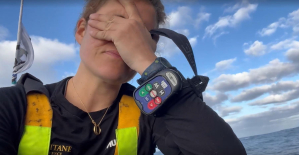 Sailing: “Like a house that threatens to collapse”, Clarisse Crémer exhausted and in tears aboard her damaged boat
Sailing: “Like a house that threatens to collapse”, Clarisse Crémer exhausted and in tears aboard her damaged boat NBA: Patrick Beverley loses his temper and throws balls at Pacers fans
NBA: Patrick Beverley loses his temper and throws balls at Pacers fans


















